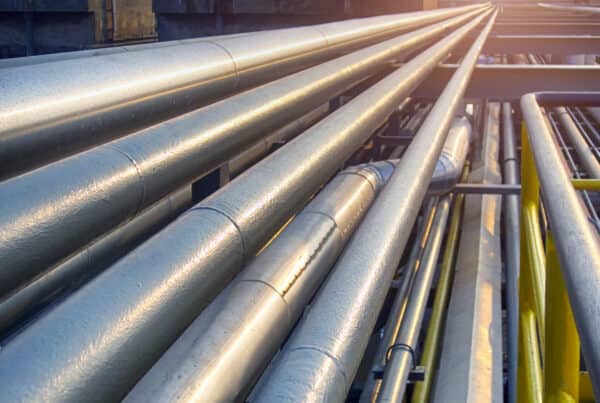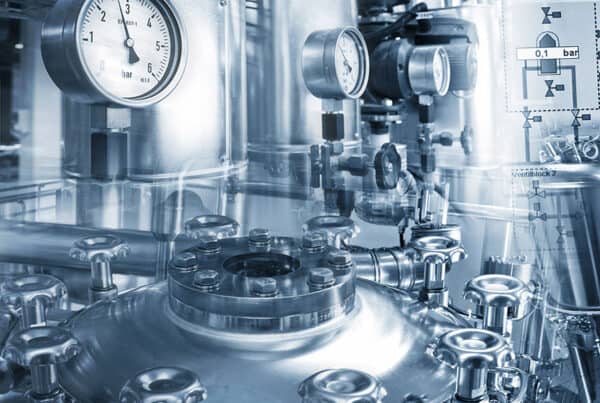
Transporting oil and gas through pipelines can be risky because oil and gas are hazardous and flammable materials. Keeping hazards to a minimum requires quality pipelines without any defects. However, ensuring a defect-free pipeline can be difficult, especially around weld joints. As a response, oil and gas pipeline standards have been established to help guide manufacturers in choosing weld processes and materials for different operating environments—for instance, when the pipes are laid onshore, offshore, underground, or overground.
In this article, we will discuss industry standards and government regulations enacted globally and also those established for pipeline welding. By following these standards, manufacturers can increase safety and minimize hazards in the oil and gas industry.
Different Oil and Gas Pipeline Standards
Standardization in the oil and gas industry is necessary for a few reasons:
- To establish the minimum set of rules for material, design, fabrication, and testing processes in the oil and gas industry.
- To ensure uniformity of operation on a local or global scale.
- To create pipelines that are consistently and reliably safe and defect-free.
Local and international agencies such as API, ISO, and ASME have set out several industry-standard practices for the proper setup and safe use of pipeline systems. The following table shows these different standards and regulations covering the oil and gas pipeline system.
| ISO (International Organization for Standardization): International Pipeline Standards |
| ISO 13623:2017 | For onshore or offshore pipeline systemsProvides recommendations regarding material use, safe design, fabrication, operation, and maintenance of the pipeline systems |
| ISO 16440:2016 | Specification for the steel-cased pipeline, its design, fabrication, and maintenance in the oil and gas industry |
| API (American Petroleum Institute): Recommended Practice for Pipeline Operation in the Oil and Gas Industry |
| API 1104 | Standard for welding carbon or low-alloy steel pipeline system |
| API RP Series 5 (5L), 6 | Standards for pipelines, supporting valves, and connectors |
| ASME (American Society of Mechanical Engineers): Pipeline Design, Fabrication, and Installation Requirements |
| ASME B31.4 | Standards for design, fabrication, material use, and maintenance of pipeline system for transporting liquid hydrocarbon |
| ASME B31.8 | Standards for transmission and distribution of gas piping system |
| ASME B16.5 | Dimensional specification for pipeline fittings, valves, flanges |
| AWS (American Welding Society): Pipeline and Welding Standards |
| AWS D10.12 | Welding specification for mild steel pipes and tubes |
| AWS D10.18 | Welding specification for stainless steel pipes and tubes |
Welding Standards for Oil and Gas Pipeline
Oil and gas pipeline standards are established in the interest of public safety. When the configuration and metallurgy of the pipeline meet regulatory codes and industrial standards, pipelines can be deemed safe and reliable at both national and international levels. Moreover, by adhering to clear welding standards, welders can help ensure the final results consistently meet the application-specific requirements.
Ensuring regulatory compliance for oil and gas pipelines also involves extensive welding codes and guidelines set out by organizations like AWS and API.
API1104, as listed in the table above, is a widely used oil and gas pipeline standard for welding. The standard covers welding specifications for installing and maintaining new or in-service pipelines and related facilities. It covers TIG, MIG, FCAW, and other processes for butt, fillet, and socket welds in carbon or low-alloy steel pipes. The standard also covers provisions for automated or semi-automated processes to produce these pipeline welds—as well as the ultimate inspection techniques for assessing weld quality.
AWS, in addition, has also set multiple standards for pipeline welding when using different types of materials, welding processes, and applications. Codes AWS D10.12 and AWS D10.18 directly target the oil and gas pipeline systems and provide information to ensure safe and high-quality welding.
Oil and Gas Pipeline Standards Compliance
A pipeline is synonymous with quality and safety only when every step—from the material selection to welding and installation—is accomplished flawlessly. Codes and regulations can help provide guidelines enabling operators and welders to weld and install the pipeline to meet industry standards. By adhering to industry codes and regulations, manufacturers can help minimize risks and prevent hazards in critical oil and gas pipeline welds.
Arc Machines, Inc. is an industry leader in high-quality welding solutions, including orbital welding machines and auto weld heads. With decades of welding expertise, we can help ensure that you meet current oil and gas pipeline standards. For inquiries regarding products, contact sales@arcmachines.com. For service inquiries, contact service@arcmachines.com. Arc Machines welcomes the opportunity to discuss your specific needs. Contact us to arrange a meeting.




